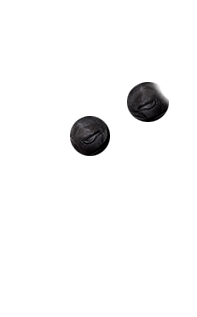
4 Web Design Trends Making Waves in 2016
#BlogArticles
Modern web design is an ever-evolving field, with best-practices and trends changing every year. And, with the rate of technological advancement and change in user preferences, it doesn’t look like this will change any time soon.
So what’s happening in 2016?
What trends are people clamoring for and, more importantly, which ones are actually beneficial for a brand?
Here are four current trends you’re going to want to keep your eye on:
1. Biting Into The Hamburger Menu
 The days of detailed header menus appears to be coming to a close. Instead, condensing all menu items into the three horizontal lines of a so-called “hamburger menu” is what’s hip in modern web design.
The days of detailed header menus appears to be coming to a close. Instead, condensing all menu items into the three horizontal lines of a so-called “hamburger menu” is what’s hip in modern web design.
This is becoming increasingly popular for a few reasons. For mobile users, it presents an easily accessible menu structure that is touch-responsive. For desktop, it allows web design teams to create a compelling homepage without cluttering the header with a clunky menu structure.
The hamburger menu isn’t all good, however. It can be difficult to navigate and even locate for some desktop users. As its ubiquity increases, most users should grow accustomed to it and these problems will cease.
2. Titillating Typography
 Sans-serif – it’s been an absolute must for fonts to drop the frills for web design. This is largely for function, as sans serif font choices (like the ever-popular Helvetica) are easy to read, and show up better on lower resolution screens.
Sans-serif – it’s been an absolute must for fonts to drop the frills for web design. This is largely for function, as sans serif font choices (like the ever-popular Helvetica) are easy to read, and show up better on lower resolution screens.
But as screen resolutions grow increasingly higher, a wider array of fonts can be used, including elaborate typography. Fantastic flourishes of personalized handwriting will dominate the headers of many stylish web pages.
This is definitely a trend to tread carefully with. When overdone, stylized writing can look tacky and dated. Done properly, it can inject web pages with a bit of personality and break a mode of cookie-cutter web pages.
3. Cards Are Taking over Tiles

Popularized by Pinterest, tiles quickly became a hip trend over the last few years. While
the idea of media-rich content like tiles isn’t going anywhere anytime soon, the small, simple tiles are being replaced with larger, more versatile “cards.”
These cards can respond to hover effects, flipping and displaying written content in addition to the image. When used properly, they also create a natural grid pattern on a web page giving it a sense of organization – a good web design habit.
Cards respond wonderfully to various devices and sizes, rearranging as need be to fit the user’s screen, creating a personalized user experience.
4. Dynamic Storytelling for Engaging Content
A trend for a few years now, blending videos, images and text into dynamic stories is only ramping up as better bandwidth allows more media rich content on websites.
Dynamic storytelling can be tricky business – it requires careful storyboarding and keeping the message consistent with the media being presented. When done well, it can be an extremely effective way of engaging users.
Whether a simple “About Us” page or the summary of a major project, dynamic storytelling is only going to ramp up in the coming year.
In Summary…
When pursuing a web design team, it’s important to find one that can keep up with the current trends. More importantly, your team should create a design should remain relatively timeless regardless of passing fads.
2016 promises some brand new trends, a few older ones continuing in popularity, and some just beginning to fade out. It’s important to distinguish them, leveraging their positive aspects to make the most of a brand.
For excellence in Edmonton Web Design, check out SOS Media Corp to bring the latest and greatest to modern, functional, and responsive websites.

